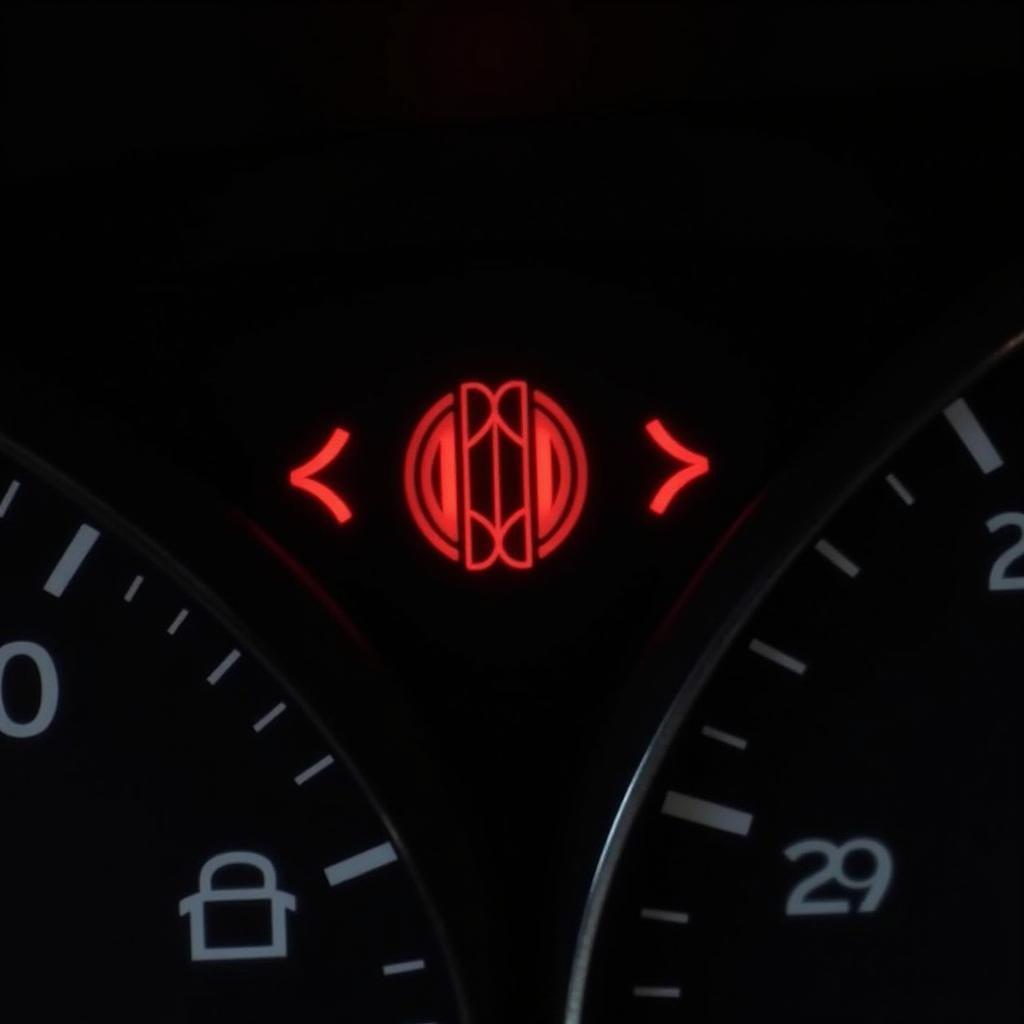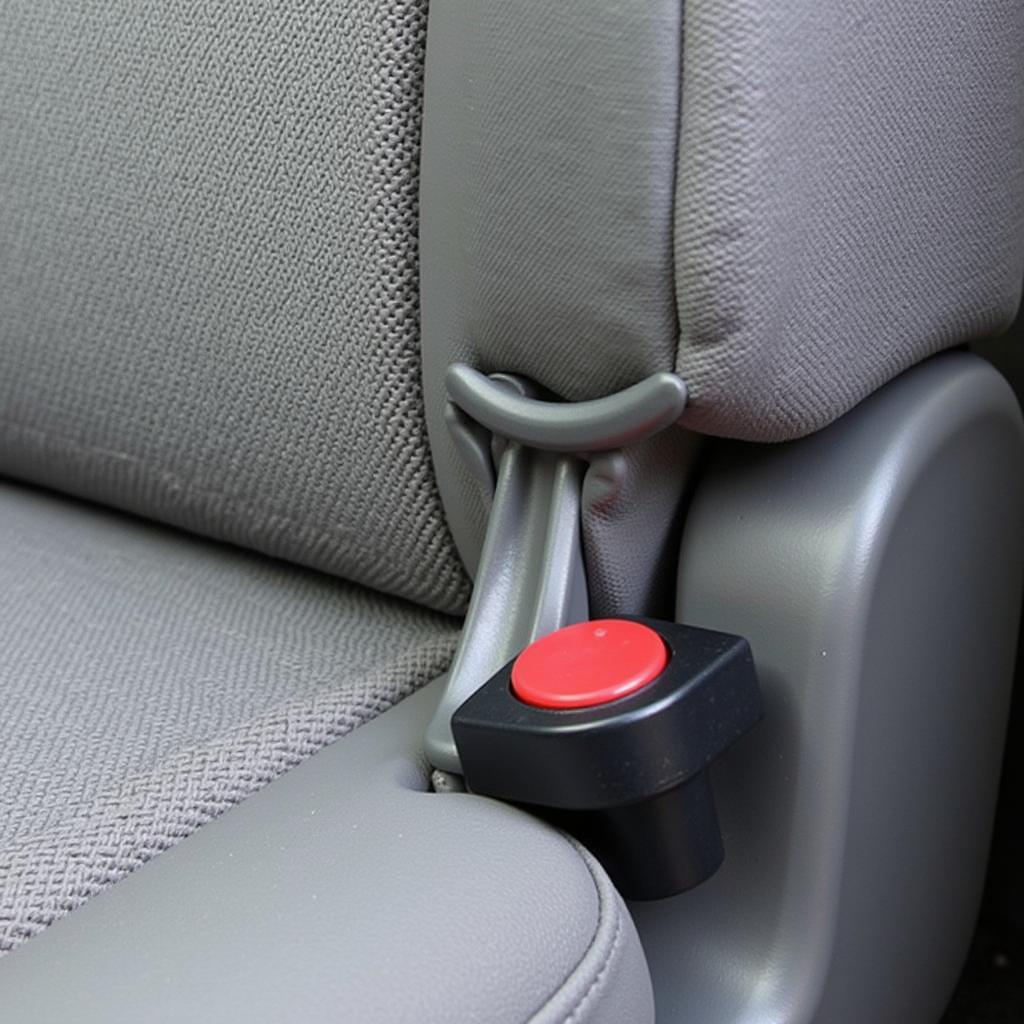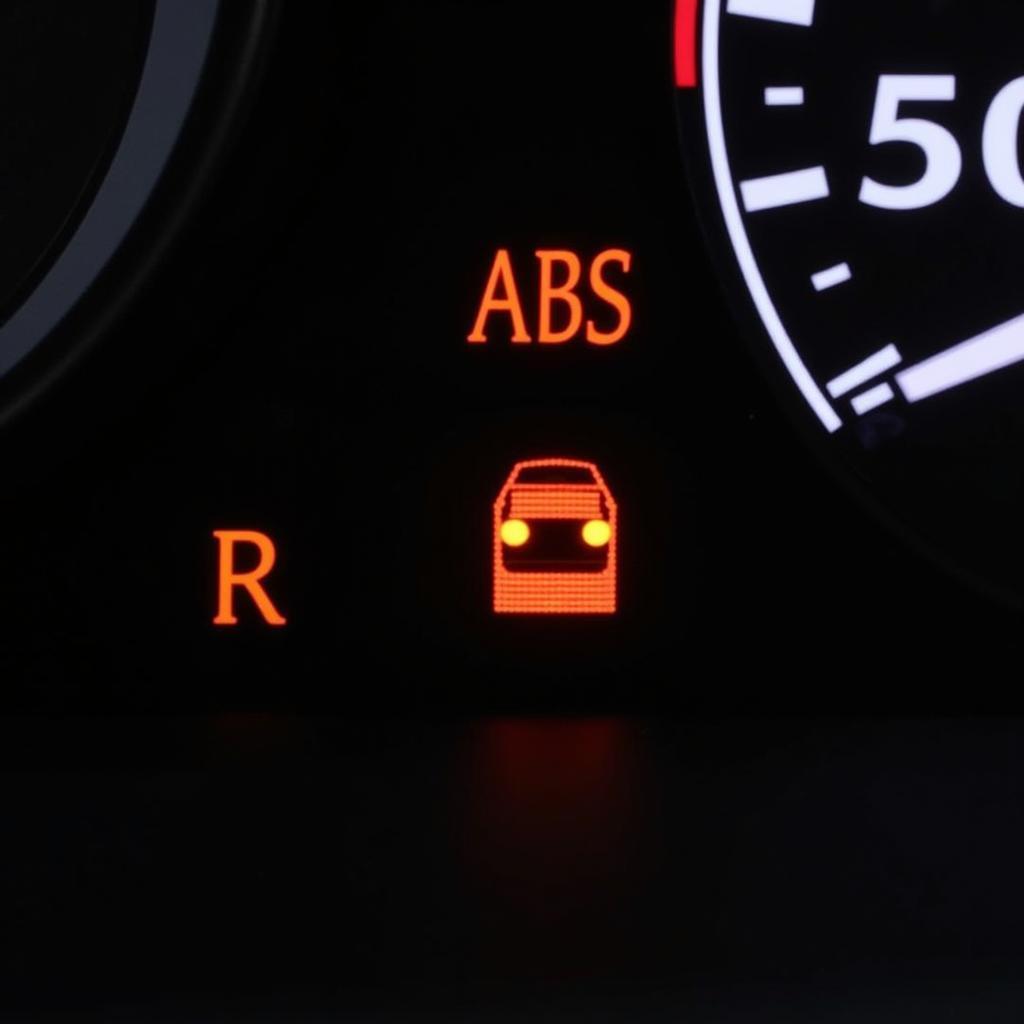The brake pad warning light on your Mazda CX-5 is a crucial safety feature designed to alert you when your brake pads are wearing thin and require replacement. Ignoring this warning can lead to reduced braking efficiency and potentially dangerous driving situations. This comprehensive guide will delve into the common causes of a Mazda CX-5 brake pad warning light, how to diagnose the issue, and the necessary steps to rectify it.
 Mazda CX-5 dashboard with illuminated brake pad warning light
Mazda CX-5 dashboard with illuminated brake pad warning light
Understanding Your Mazda CX-5 Brake Pad Warning Light
The brake pad warning light, typically a circular symbol with parentheses on either side, illuminates on your dashboard when the brake pad sensor detects a low pad thickness. This system works through a small sensor wire embedded within the brake pad material. As the brake pads wear down over time, the sensor wire eventually makes contact with the brake rotor, completing an electrical circuit that triggers the warning light.
Common Causes of a Mazda CX-5 Brake Pad Warning Light
While worn brake pads are the most frequent culprit, several other factors can trigger the brake pad warning light in your Mazda CX-5:
- Worn Brake Pad Sensors: Sometimes, the sensor itself can be damaged or worn out, causing a false warning light.
- Damaged Wiring: A short circuit or broken wire in the brake pad sensor system can also illuminate the warning light.
- Faulty Brake Fluid Reservoir Sensor: While less common, a malfunctioning brake fluid reservoir sensor can also trigger the brake pad warning light.
- Issues with the Electronic Parking Brake: Some Mazda CX-5 models might display the brake pad warning light due to issues with the electronic parking brake system.
Diagnosing the Issue
If your Mazda CX-5 brake pad warning light illuminates, it’s essential to diagnose the problem promptly. Here’s a step-by-step guide:
- Check Your Brake Pads: Begin by visually inspecting your brake pads for wear. If they appear thin or you notice a significant difference in thickness compared to new brake pads, it’s time for a replacement.
- Inspect the Brake Pad Sensors: Examine the brake pad sensor wires for any signs of damage, such as cuts, fraying, or disconnections.
- Check Brake Fluid Level: Ensure the brake fluid level in the reservoir is within the recommended range. Low brake fluid can also trigger the warning light.
- Consult a Professional: If you’re unable to pinpoint the cause or suspect a more complex issue, it’s crucial to consult a qualified mechanic specializing in Mazda vehicles.
Addressing the Brake Pad Warning Light
The solution to your Mazda CX-5 brake pad warning light depends entirely on the underlying cause:
- Worn Brake Pads: If your inspection reveals worn brake pads, replace them immediately. It’s recommended to replace all four brake pads simultaneously to ensure even braking performance.
- Faulty Brake Pad Sensor: If the sensor is damaged or worn out, replace it with a new one.
- Wiring Issues: Address any damaged or broken wires in the brake pad sensor system by repairing or replacing them.
- Brake Fluid Issues: Refill the brake fluid to the appropriate level if it’s low. If you notice leaks or consistent fluid loss, consult a mechanic to address potential leaks in the brake lines.
- Electronic Parking Brake Problems: For issues related to the electronic parking brake system, diagnosis and repair might require specialized equipment and expertise. Consult a qualified Mazda technician for assistance.
Preventative Measures and Maintenance
To avoid unexpected brake pad warning light situations and ensure optimal braking performance, consider these preventative measures:
- Regular Brake Inspections: Schedule routine brake inspections, especially if you frequently drive in city traffic or harsh conditions.
- Timely Brake Pad Replacement: Adhere to the manufacturer’s recommended brake pad replacement intervals outlined in your Mazda CX-5 owner’s manual.
- Quality Brake Pads: Invest in high-quality brake pads from reputable brands to ensure durability and optimal braking performance.
Seeking Professional Help
While some brake pad warning light issues can be resolved with basic DIY skills, certain situations demand the expertise of qualified professionals. If you encounter any of the following, it’s best to seek assistance from a trusted mechanic specializing in Mazda vehicles:
- Persistent Warning Light: If the warning light persists despite replacing the brake pads and sensors, there might be a deeper electrical issue within the system.
- Unusual Noises: Grinding, screeching, or squealing noises during braking can indicate severe brake pad wear or other brake system problems.
- Vibrations or Pulsations: Vibrations or pulsations felt through the brake pedal can point to warped rotors, which require professional attention.
Conclusion
Addressing the Mazda CX-5 brake pad warning light promptly is crucial for your safety and the longevity of your vehicle. By understanding the common causes, diligently diagnosing the issue, and taking appropriate action, you can ensure optimal braking performance and a safe driving experience. Remember, when in doubt, always seek professional help from a qualified Mazda technician.
For information on other warning lights in your Mazda, refer to our guides on 2018 Mazda CX-5 brake assist warning, brake warning light Mazda, and brake warning light Mazda CX-3. If you are experiencing issues with your electric parking brake, we have a dedicated guide on the electric parking brake warning light Mazda CX 5.
FAQs
Q: Can I continue driving with the brake pad warning light on?
A: It is not recommended. Driving with worn brake pads can significantly reduce braking efficiency and increase the risk of accidents.
Q: How often should I replace my Mazda CX-5 brake pads?
A: Brake pad lifespan varies based on driving habits and conditions. Consult your owner’s manual for the recommended replacement interval, typically between 30,000 to 70,000 miles.
Q: How much does it cost to replace brake pads on a Mazda CX-5?
A: The cost depends on factors like brake pad type, labor costs, and location. On average, expect to pay between $150 to $300 per axle.
Q: Can I replace my Mazda CX-5 brake pads myself?
A: While possible with mechanical skills and the right tools, brake pad replacement is best left to professionals to ensure proper installation and safety.
Q: What are some signs of a faulty brake pad sensor?
A: A damaged or worn-out sensor might exhibit signs like physical damage to the sensor wire, an illuminated warning light despite new brake pads, or intermittent warning light flickering.


